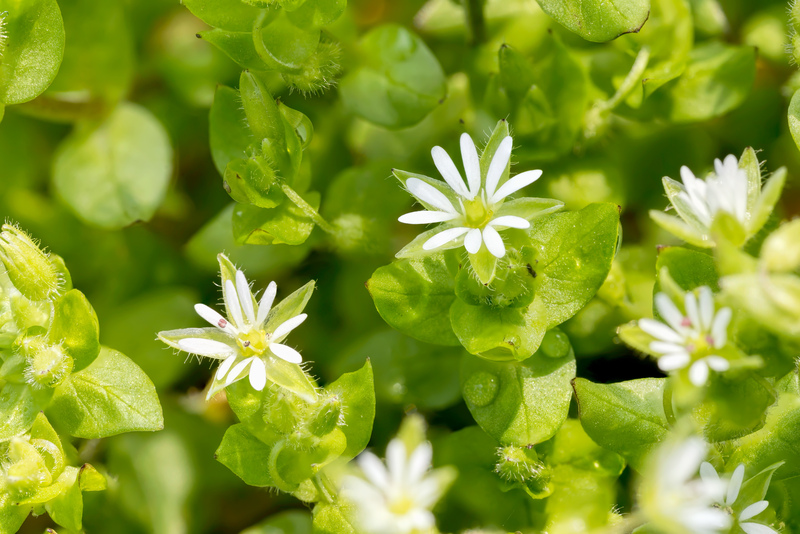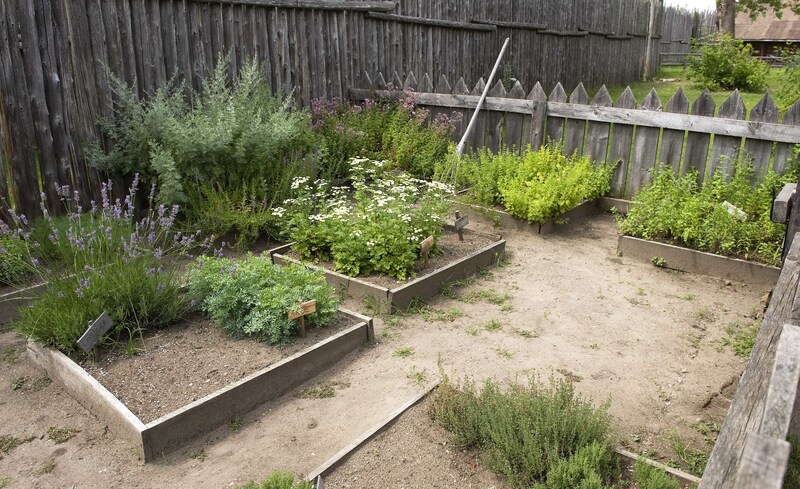Effective Techniques for Orchid Growth
Posted on 30/08/2025
Effective Techniques for Orchid Growth: The Ultimate Guide to Thriving Orchids
Are you passionate about orchid care? Whether you're an experienced gardener or a curious beginner, mastering effective techniques for orchid growth can transform your plants from simple house decorations into breathtaking living art. This guide unveils the secrets to healthy, vibrant, and long-lasting orchids, focusing on practical tips, scientific insights, and expert advice for maximizing your orchids' potential.
Understanding Orchid Basics: Foundation for Growth
What Are Orchids?
Orchids are a diverse family of flowering plants, known as Orchidaceae, boasting over 25,000 species and hundreds of thousands of hybrids. Their stunning variety, exotic beauty, and sometimes delicate nature make orchids a favorite among collectors and home gardeners. Phalaenopsis (Moth Orchid), Cattleya, Dendrobium, and Oncidium are among the most popular varieties found in homes.
What Makes Orchids Unique?
Unlike many houseplants, orchids have evolved special adaptations:
- Epiphytic roots: Many orchids grow attached to trees, absorbing moisture and nutrients from the air.
- Specialized leaves: Thick and waxy to conserve water.
- Specific blooming cycles: Requiring the right triggers to stimulate flowers.
Understanding these features is the first step towards successful orchid cultivation.

Best Practices and Techniques for Orchid Growth
1. Choosing the Right Orchid and Potting Medium
Every journey to successful orchid growth starts with choosing the right species for your conditions. Beginner-friendly varieties such as Phalaenopsis or Dendrobium thrive indoors and require less technical care.
Potting media is crucial:
- Bark chips: Excellent aeration and drainage, suitable for most epiphytic orchids.
- Sphagnum moss: Retains moisture well; best for young plants or those that require more humidity.
- Perlite or charcoal: Often added to increase drainage and prevent root rot.
Always avoid standard potting soil, as it retains too much water and can suffocate orchid roots.
2. Orchid Watering Techniques
Watering is a critical aspect of effective orchid cultivation. Orchids do not appreciate "wet feet." Instead, they prefer to dry out slightly between waterings.
- Check the Media: Insert your finger or a wooden skewer into the medium. If it's dry an inch below the surface, it's time to water.
- Water Generously: Allow water to run through the pot, flushing out salts but never let the plant sit in water.
- Use Room Temperature Water: Cold water can shock orchids; distilled or rainwater is ideal for less mineral buildup.
Warning! Overwatering is the most common cause of orchid failure. Always prioritize thorough drainage and avoid soggy conditions.
3. Light Requirements for Optimal Orchid Health
Light exposure greatly impacts orchid growth. Each species has unique needs, but most thrive in bright, indirect sunlight:
- South or East-Facing Windows: Offer ample natural light without harsh, direct rays--which can scorch leaves.
- Supplement with Grow Lights: In low-light homes, use specialized LED grow lights placed 12-18 inches above the plants for best results.
- Watch the Leaves: Healthy leaves should be bright green, never deep green (too little light) or yellowish (too much light).
4. Ideal Temperature and Humidity Levels
Orchids are sensitive to temperature and humidity variations. Maintaining the right range improves flowering and overall health:
- Daytime temperatures: 65-80?F (18-27?C) are optimal for most house orchids.
- Night temperatures: Should be slightly cooler, around 55-65?F (13-18?C) to trigger blooming in many types.
- Humidity: Aim for 40-70%. Use a humidity tray, mist the leaves, or use a small room humidifier in drier climates.
Tip: Grouping orchids together helps increase local humidity. Ensure good air circulation to prevent fungal issues.
5. Fertilizing Techniques for Robust Orchid Growth
Orchids need less fertilizer than many houseplants, but steady nutrition supports vigorous growth and prolific blooming:
- Balanced Fertilizer: Use a water-soluble, balanced fertilizer (20-20-20) at 1/4 strength, applied every two weeks during active growth periods.
- "Weakly, weekly" regime: Dilute fertilizer to 1/4 the typical dose, and apply each week during the growing season.
- Flush with Clean Water: Once a month, water thoroughly with plain water to remove accumulated fertilizer salts.
During dormancy or cooler months, reduce feeding to every 4-6 weeks.
6. Potting and Repotting Methods
Repotting techniques are essential for sustained orchid health. Orchids typically require repotting every 1-2 years:
- Choose the Right Time: Repot just after flowering, when new growth is beginning.
- Select an Appropriate Pot: Clear pots help monitor root health and moisture. Ensure plenty of drainage holes.
- Trim Damaged Roots: Use sterilized scissors to remove dead or mushy roots before placing into fresh medium.
7. Pruning, Maintenance, and Grooming
Regular pruning and grooming ensures orchids remain healthy and attractive:
- Cut back spent flower spikes just above a node to encourage rebloom (especially for Phalaenopsis).
- Remove yellow or damaged leaves to prevent disease spread.
- Wipe leaves periodically to remove dust and pests with a damp cloth.
Advanced Techniques for Enhanced Orchid Growth
Encouraging Flowering and Reblooming
Getting orchids to rebloom is a sign of effective care. The key is simulating their natural environment:
- Temperature Fluctuations: Orchids like Phalaenopsis often need a 10?F (6?C) drop at night for several weeks to trigger new flower spikes.
- Light Adjustment: Increase daylight exposure as days grow longer. Enhance with artificial lights if necessary.
- Balanced Watering: Periods of slightly reduced watering can simulate "dry season" cues for some species.
Preventing and Treating Common Orchid Problems
Even with proper orchid care practices, occasional problems may arise. Early intervention addresses issues before they become severe:
- Root rot: Caused by overwatering or dense media. Remove rotten roots, repot, and reduce watering frequency.
- Pest infestations: Treat mealybugs, aphids, and spider mites promptly with insecticidal soap or neem oil.
- Leaf spots: Improve air circulation and avoid wetting leaves to prevent fungal diseases.
Tip: Always use sterilized tools when pruning or repotting to avoid disease transmission.
Propagation Techniques
Propagation lets you multiply your orchids and experiment with new varieties:
- Division: Most common for sympodial orchids (like Cattleya and Dendrobium). Divide when repotting, ensuring each clump has at least three healthy pseudobulbs.
- Keiki growth: Some orchids, especially Phalaenopsis, produce baby plants (keikis) on flower spikes. When roots develop, separate and pot the keiki.
- Seed germination: Advanced and time-consuming; requires sterile techniques often performed by experts.
Environmental Control and Orchid Placement
Indoor Orchid Growth Techniques
For indoor growers, successful orchid growth involves:
- Consistent location: Avoid moving orchids frequently, which can stress them and hinder blooming.
- Use sheer curtains: Diffuse strong sunlight to prevent leaf burn.
- Monitor microclimates: Identify the best rooms for light, humidity, and temperatures in your home.
Outdoor Orchid Cultivation
In subtropical or tropical regions, many orchids can thrive outdoors:
- Mount on trees: Epiphytic species attach well to oak, palm, or citrus trees in filtered sunlight.
- Protect from extremes: Provide shelter during storms, high winds, or sudden cold snaps.
- Water naturally: Supplemental misting helps during dry spells but avoid over-saturating roots.
Year-Round Orchid Care Calendar
Successful orchid growth involves seasonal adjustments:
- Spring: Increase watering and fertilizing as growth resumes. Repot if needed.
- Summer: Ensure adequate shade and ventilation. Maintain higher humidity.
- Fall: Gradually reduce fertilizer. Induce temperature drops to initiate blooming.
- Winter: Lower watering frequency. Protect from cold drafts and maintain humidity indoors.

Frequently Asked Questions About Orchid Growth Techniques
1. Why do my orchid leaves turn yellow?
Yellow leaves can result from overwatering, too much direct sun, or natural leaf aging. Assess watering habits and lighting conditions to determine the cause.
2. How do I know when to water my orchid?
Check that the potting media is dry about an inch below the surface. Water thoroughly when needed, and always ensure proper drainage.
3. How can I encourage my orchid to rebloom?
Trigger reblooming by providing a nighttime temperature drop, increasing light exposure, and maintaining regular (but not excessive) watering and fertilization.
4. Is misting orchids necessary?
Misting can increase humidity but should be limited to avoid fungal problems. Focus on overall room humidity or use a humidity tray.
Conclusion: Your Path to Orchid Mastery
Orchid growth techniques blend science, art, and attentive observation. With the right mix of light, water, nutrition, and environmental control, anyone can cultivate thriving orchids at home. Remember: patience and consistency are key. As you fine-tune your care and learn from your plants, you'll be rewarded with healthy roots, glossy leaves, and spectacular blooms year after year.
Start applying these effective techniques for orchid growth today, and enjoy the beauty, elegance, and satisfaction that comes with caring for these exquisite living treasures.

